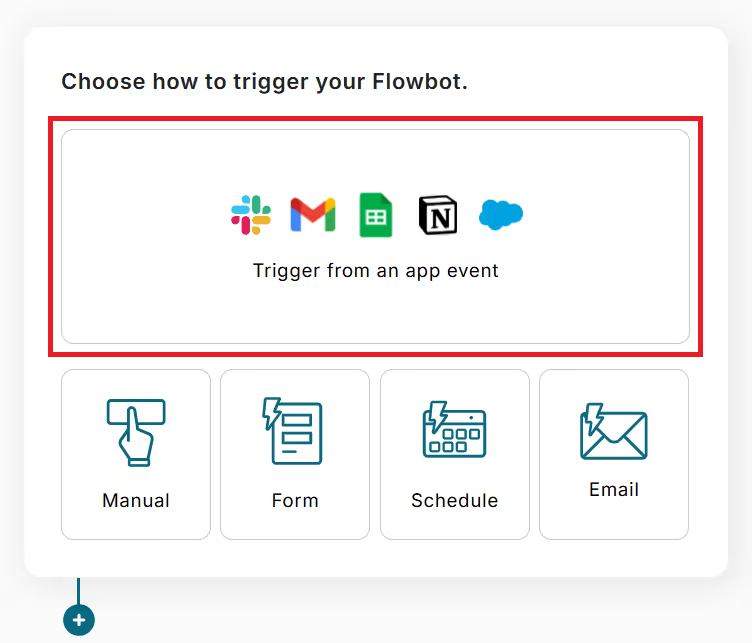1. Hover over the banner and click "View Details"
2. Click "Try this template" on the page you navigated to
3. Register for Yoom
※ If you have already registered, the login screen will be displayed, so please log in.
Step 2: Set a trigger to activate when an email is received in Outlook
3. From the project list in the menu, select any project.

4. Select "+Create New" on the right side of the screen and click "Create from Scratch".

5. Enter any title and select "When a specific condition email is received" as the trigger condition for starting the flow bot.

6. Set the conditions for the email trigger.
"Title": Set it as desired.
"Create a receiving address": Enter any value.
"Trigger condition": Select and enter as needed.
You can set the trigger activation condition to include words in the subject, body, or From.
※ For forwarding settings from Outlook, please refer to the following.
How to forward emails from Microsoft Outlook and activate email triggers


7. Click "Next". (From here, it is the flow after completing the Outlook forwarding settings.)
8. Conduct a test, and if successful, click "Save".

Step 3: Set an action to extract text data from an email
9. Click the "+" button below the app trigger created in Step 2.

10. Select "Extract data from text" from the operation type.

11. Select "Data extraction (2 tasks)" from the conversion type.

12. Set "Select Action". Please enter a title as desired.

13. Click "Next".
14. Make detailed settings. (The figure below assumes the forwarding of an inquiry form.)
・Target text: Please refer to the email body from the output of Step 2-Procedure 8.
・Items to extract: Enter the content you want to notify from the email body to Microsoft Teams, excluding the overall summary.


15. Conduct a test, and if successful, click "Save".
Step 4: Set an action to summarize the content of the email
16. Click the "+" button below the operation created in Step 3.

17. Select "Summarize" from the operation type.

18. Set "Select Action".
・Title: Set it as desired.
・Action: Set it as desired, considering the expected character count of the email body to be summarized.

19. Make detailed settings.
・Target text: Please refer to the email body from the output of Step 2-Procedure 8.
・Character count: Set it as desired. (Example in the figure: 100)
・Summary conditions: Set it as desired. (Example in the figure: Summarize the main points in bullet points)


20. Conduct a test, and if successful, click "Save".
Step 5: Set an action to send a message to a Microsoft Teams channel
21. Click the "+" button below the operation created in Step 4.

22. Select "Integrate with app" from the operation type.
23. Select Microsoft Teams from the app list.

24. Set "Select integrated account and action".
・Title: Set it as desired. (Example: "Send a message to the channel")
・Action: Select "Send a message to the channel".

25. Click "Next".
26. Set API connection settings.
・Team ID: Select from the options.
・Channel ID: Select from the options.
・Message: Enter the content you want to notify.
The figure below is an example of a message that includes the name, email address, and summary results of the body extracted from the output reference.
※ Although not shown in the figure, it is also possible to set mentions and attachments.


27. Conduct a test, and if successful, click "Save".
Finally, if you switch the trigger of the saved flow to "ON", it will activate.
This completes the flow of "Notify Microsoft Teams when an email is received in Outlook".
By extracting data with AI, it eliminates the need for complex regular expression settings when obtaining names, email addresses, addresses, etc., within the email.
Conversely, if there is no need to extract specific items from the body or summarize the body, it is also possible to omit each step using AI.














.avif)





.avif)

.avif)
.avif)





